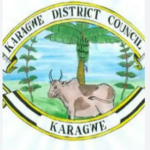About Company
Location & Coverage
-
Karagwe District in northwestern Tanzania covers around 5,134 km², bordering Uganda and Rwanda via the Kagera River, with a varied landscape of hills (1,200–1,800 m elevation), swamps, valleys, and small lakes like Burigi and Rwakajunju.
🌐 Administration & Governance
-
It operates under the Ministry of Regional Administration and Local Government, led by the District Executive Director (DED).
-
The district is divided into 5 divisions—Bugene, Kituntu, Nyaishozi, Nyabiyonza, and Nyakakika—comprising 23 wards, 77 villages, and 629 hamlets.
-
Council structure includes a District Council with roughly 30 elected councillors, chaired (as of 2020) by Wallace Mashanda.
-
The Council maintains 13 departments and 6 units, coordinating service delivery across sectors including water, administration, education, and public works.
🌍 Demographics
-
As per the 2022 census, the district’s population stands at approximately 385,744 people across around 93,366 households, showing steady growth from 332,020 in 2012.
-
Major ethnic groups include Nyambo (Banyambo), Haya, Sukuma, Hangaza, among others.
🏫 Services & Infrastructure
-
Education: 117 primary schools (~5.1 per ward) and 19 secondary schools (as of 2015).
-
Health: 2 hospitals, 2 health centres, and 37 dispensaries (2015 data). District-wide access to mobile networks and radio, but limited electricity in remote areas.
-
Roads: 1,394 km total road network—mostly feeder roads (75%), plus district and regional roads .
-
Water & sanitation: Around 67% of rural households access clean water (managed by RUWASA); waste typically handled via septic pits or covered earth burial.
🌾 Economy & Natural Resources
-
Agriculture dominates (coffee, bananas, beans), followed by livestock (cattle, goats, pigs), fishing (e.g., Lake Burigi), beekeeping (~9,954 modern hives by 2015), and tourism (Burigi‑Chato & Rumanyika‑Karagwe National Parks).
-
Tourism benefits from national parks established in 2019, including the 247 km² Rumanyika‑Karagwe Park.
🏛️ Historical & Cultural Context
-
The area is historically rooted in the pre-colonial Karagwe Kingdom (c. 1450–1963), with its capital at Bweranyange—now a National Historic Site.
-
The Kingdom reached its peak in the early 19th century under leaders like Kings Ndagara and Rumanyika Orugundu I.
📌 Council Contact Details
-
Postal Address: P.O. Box 20, Karagwe, Kagera, Tanzania
-
Phone/Fax: +255 (0)28 222 7140 / 222 7148
-
Email: ded@karagwedc.go.tz
🔗 In Summary
-
Karagwe District Council oversees a diverse region—geographically, culturally, and economically.
-
It manages essential public services, infrastructure, and development initiatives across a network of administrative units.
-
Its evolving economy links agriculture, natural resource use, and growing tourism tied to national parks.



Be a First Reviewer